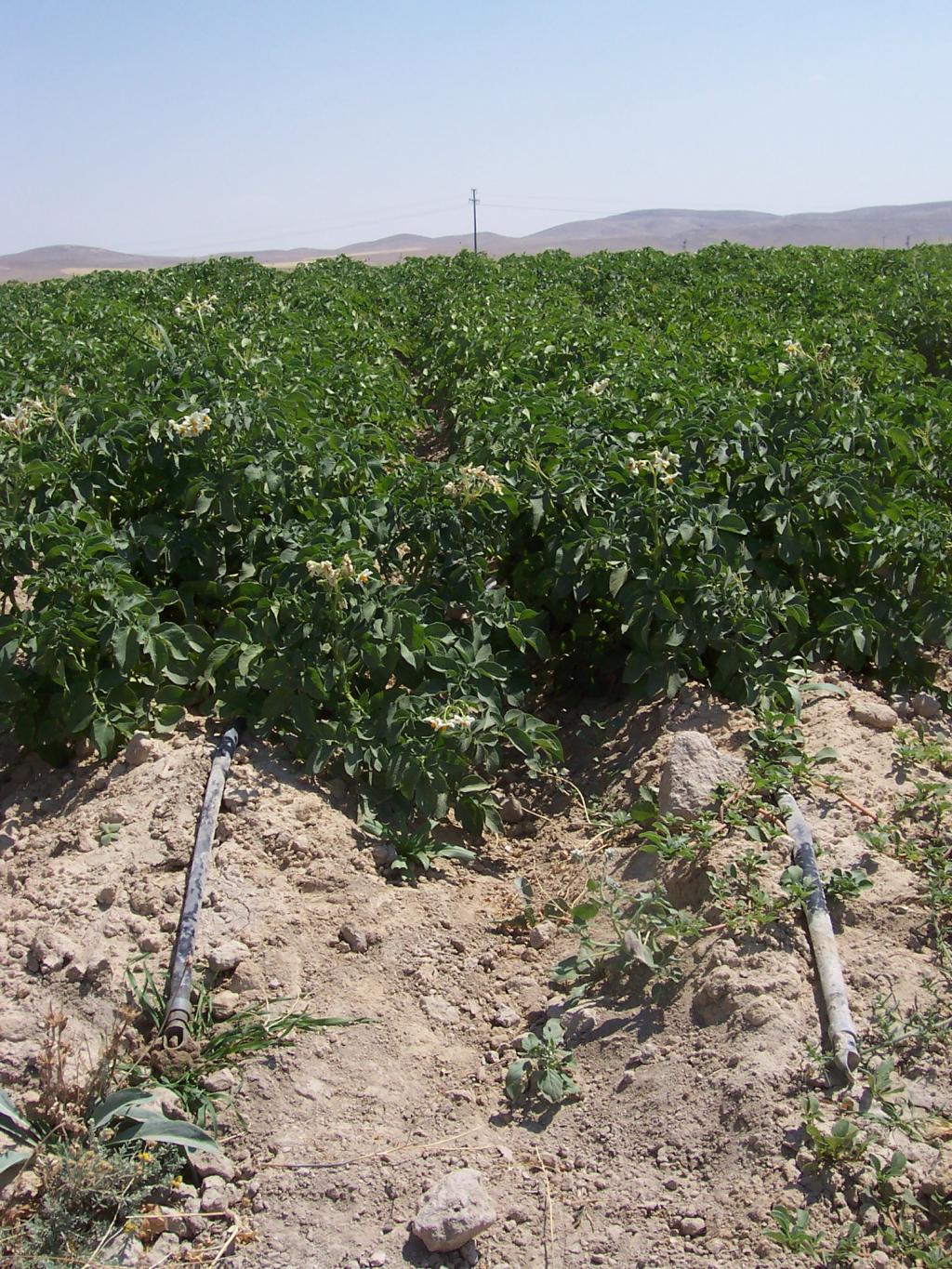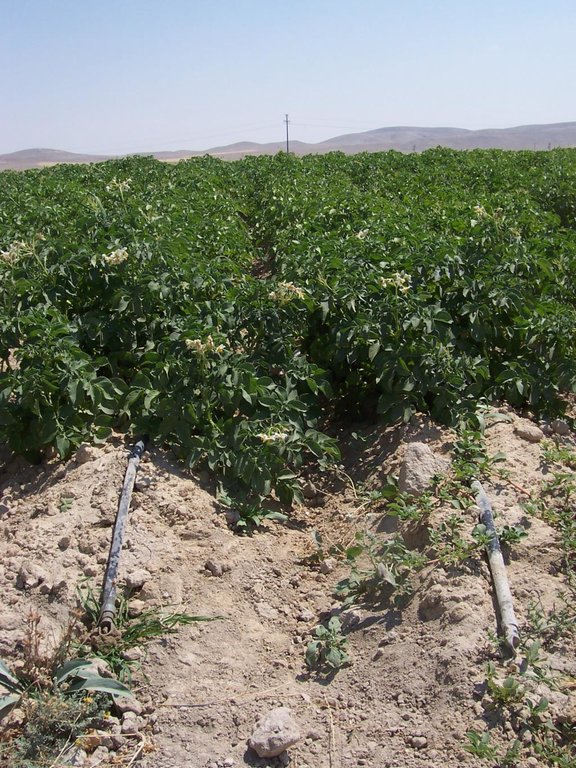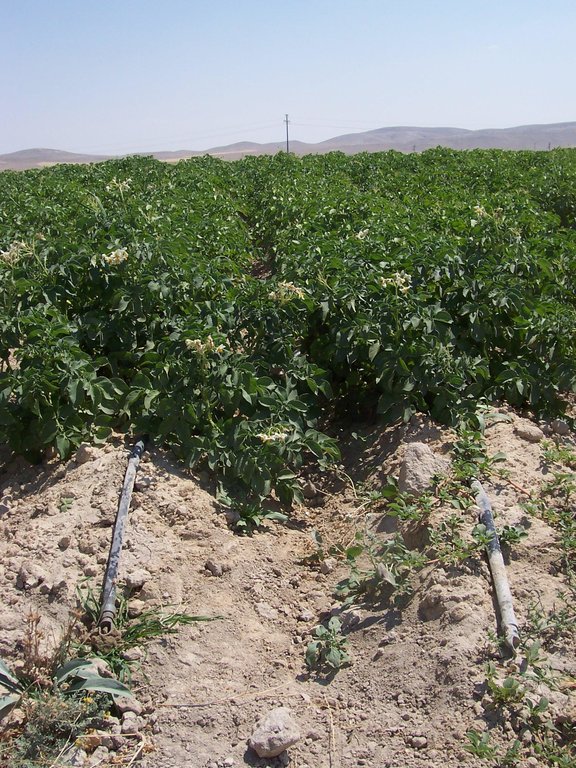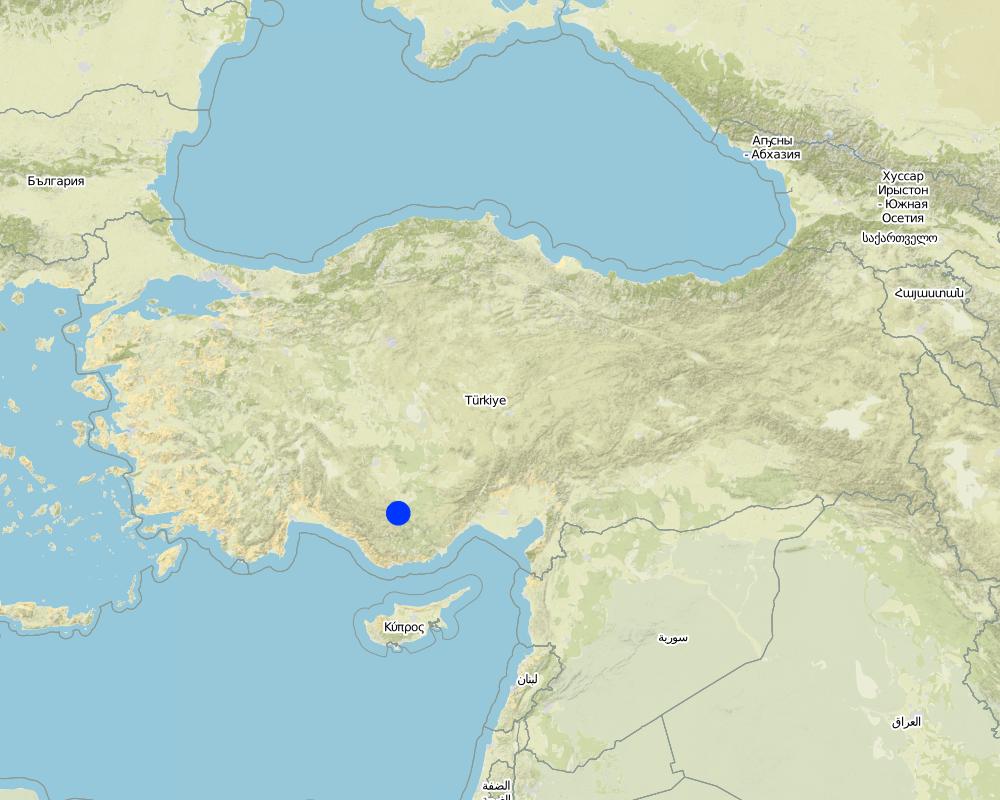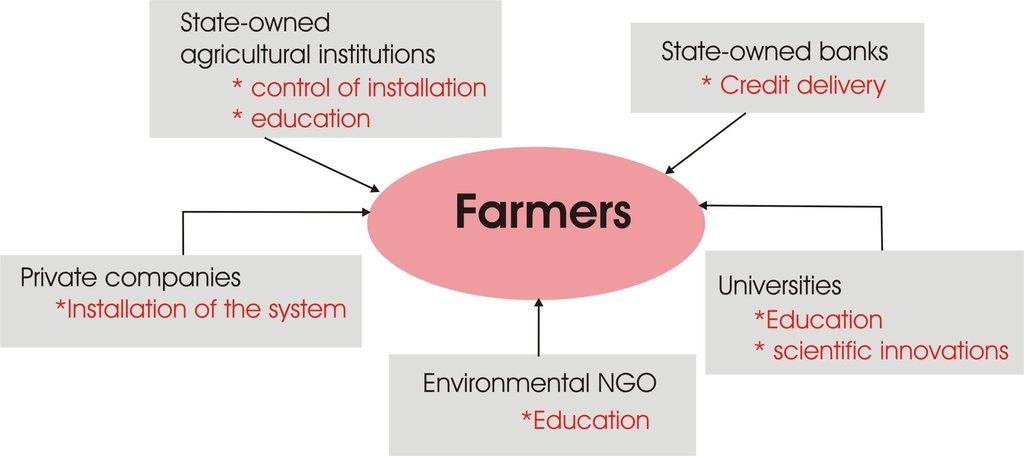Minimum Water Use [Турция]
- Создание:
- Обновить:
- Составитель: Mehmet Zengin
- Редактор: –
- Рецензент: Fabian Ottiger
approaches_2424 - Турция
Просмотреть разделы
Развернуть все Свернуть все1. Общая информация
1.2 Контактные данные специалистов и организаций, участвующих в описании и оценке Подхода
Название организации (-ий), содействовавших документированию/оценке Подхода (если применимо)
University of Selcuk, Faculty of Agriculture (University of Selcuk, Faculty of Agriculture) - Türkiye1.3 Условия, регламентирующие использование собранных ВОКАТ данных
Составитель и ответственный/-ые специалист(-ы) согласны с условиями, регламентирующими использование собранных ВОКАТ данных:
Да
1.4 Ссылка (-и) на Анкету (-ы) по Технологиям УЗП
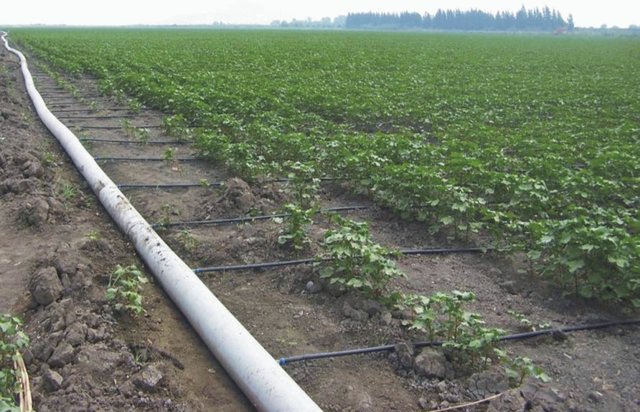
Drip irrigation [Турция]
Drip irrigation is a method designed for minimum use of water and labour for the optimum irrigation of plants in arid and semi-arid regions.
- Составитель: Faruk Ocakoglu
2. Описание Подхода УЗП
2.1 Краткое описание Подхода
Instead of flow irrigation that requires high water consumption and causes excessive evaporation, water can be transported in pipes till crop's body and can be given slowly under controlled conditions. The approach is brought to farmers by state institutions as well as banks, and education for the scientific background, installation and usage of the technology is provided by state-owned companies
2.2 Подробное описание Подхода
Подробное описание Подхода:
Aims / objectives: To inform the farmers who use water in their crops about minimum water use, effective water use, in order to conserve underground water resources in semi-arid regions. The basic stress of the approach is to demonstrate the advantages of drip irrigation in terms of croping, soil preservation and particularly the water preservation.
Methods: To convey water by means of pipes until the crop roote zone and distribute water in a controlled manner by using valves. This method facilitates also the use of chemical fertilisers.
Stages of implementation: The methods of drip irrigation system will be tought in detail to land users. Measure addresses to the benefits of minimum water use by field demonstrations. Information is delivered to the farmers in winter and the other studies are caried out in spring and summer.
Role of stakeholders: Actually drip irrigation plans are done by private companies and there is significant financial support from state companies. The role of stakeholders are limited with the eagerness to follow approach and to use suitable crop types.
2.3 Фотографии, иллюстрирующие Подход
2.5 Страна/ регион/ место, где применялся Подход
Страна:
Турция
Административная единица (Район/Область):
Konya
Более точная привязка места:
Karapınar
Map
×2.6 Даты начала и окончания реализации Подхода
Год начала реализации:
2004
2.7 Тип Подхода
- в рамках проекта/ программы
2.8 Каковы цели/ задачи Подхода
The Approach focused mainly on SLM with other activities (Drip irrigation system, irrigation, minimum water.)
To conserve the underground water, inform the farmers about the mechanisms of saving water by minimum irrigation, showing them advantage of this irrigation and then create a demand among farmers towards drip irrigation and build a robust structure between controlling authorities, knowlegde supplying units (such as universities) and financial sector.
The SLM Approach addressed the following problems: Drought and decreasing level of underground water. Lack of technical knowledge on drip irrigation tecniques and lack of existing budget to promote these techniques.
2.9 Условия содействующие применению Технологии/ Технологий в рамках Подхода или затрудняющие его
Наличие/ доступность финансовых ресурсов и услуг
- затрудняют
Treatment through the SLM Approach:
Нормативно-правовая база (землевладение, права на земле- и водопользование)
- содействуют
The existing land ownership, land use rights / water rights moderately helped the approach implementation: Existing fields belong to individual farmers but they are highly fragmented due to inheritence.
- затрудняют
Treatment through the SLM Approach:
Осведомленность в области УЗП, доступность технической поддержки
- затрудняют
Treatment through the SLM Approach:
3. Участие и распределение ролей заинтересованных сторон
3.1 Заинтересованные стороны, участвующие в реализации Подхода и их роли
- местные землепользователи/ местные сообщества
- эксперты по УЗП/ сельскому хозяйству
- государственные власти (отвечающие за планирование или принятие решений)
3.2 Участие местных землепользователей/ местных сообществ на разных стадиях реализации Подхода
| Участие местных землепользователей/ местных сообществ | Перечислите участников и опишите их вовлеченность | |
|---|---|---|
| инициирование/ мотивация | нет | |
| планирование | пассивное | Planning is done by authorised private companies. |
| выполнение | интерактивное | Implementation is done in colloboration with private companies and individual land owners. There is significant credit supports from the state for implementation of approach. |
| мониторинг/ оценка | интерактивное | Monitoring and evaluation is done by land owners themselves. |
| Research | нет |
3.3 Схема реализации (если имеется)
3.4 Принятие решений по выбору Технологии/ Технологий УЗП
Укажите, кто принимал решение по выбору применяемой Технологии/ Технологий:
- преимущественно специалисты по УЗП после консультаций с землепользователями
Поясните:
Decision is taken from top to bottom, mainly fueled with favorable agricultural credits organised by the state. Some large scale agricultural farms can build the minimum water use system by themselves without any technical and financial help from the state.
Decisions on the method of implementing the SLM Technology were made by mainly by SLM specialists with consultation of land users
4. Техническая поддержка, повышение компетенций и управление знаниями
4.1 Повышение компетенций/ обучение
Проводилось ли обучение землепользователей/ других заинтересованных лиц?
Да
Укажите, кто проходил обучение:
- местный персонал/консультанты
Тип обучения:
- опытные участки
Рассматриваемые темы:
They watched minimum irrigation water use technique with demonstrations.
4.3 Институциональная (организационная) поддержка
В ходе реализации Подхода были ли организованы новые институциональные структуры или поддержаны уже существующие?
- да, умеренно
Укажите уровень, на котором структуры были укреплены или вновь созданы:
- местные
Укажите тип поддержки:
- повышение компетенций/ обучение
Подробнее:
Local state experts control the installation to be sure that it is done accordingly the plan, and universities and local state institutions help in education of farmers on the benefits and way of installation of the approach.
4.4 Мониторинг и оценка
Являются ли мониторинг и оценка частью Подхода?
Да
Комментарии:
technical aspects were ad hoc monitored by government, other through observations; indicators: extension experts and universities made the observations.
economic / production aspects were ad hoc monitored by land users through observations
management of Approach aspects were ad hoc monitored by government through observations
There were many changes in the Approach as a result of monitoring and evaluation: As the advantages (technical as well as financial) of the approach become clear by monitoring activites though discontinous, the new irrigation teqniques is adopted by increasingly more farmers.
There were many changes in the Technology as a result of monitoring and evaluation: Technology does not change too much but its adoption rate increases.
4.5 Научные исследования
Были ли научные исследования частью Подхода?
Да
Укажите темы исследований:
- экология
Напишите подробнее и назовите тех, кто выполнял исследования:
Research was carried out on station
5. Финансирование и внешняя материальная поддержка
5.1 Годовой бюджет мероприятий по УЗП в рамках Подхода
Если точный годовой бюжет неизвестен, укажите примерный диапазон затрат:
- 100 000-1 000 000
Комментарий (например, основные источники финансирования/ ключевые доноры):
Approach costs were met by the following donors: government: 90.0%; other: 10.0%
5.2 Финансирование и внешняя материальная поддержка, предоставляемая землепользователям
Предоставлялась ли землепользователям финансовая/ материальная поддержка для применения Технологии /Технологий?
Да
5.3 Субсидии на отдельные затраты (включая оплату труда)
- оборудование
| Укажите, какие ресурсы были субсидированы | В какой степени | Опишите субсидии подробнее |
|---|---|---|
| техника | профинансированы полностью | |
| инвентарь/ инструменты | профинансированы полностью | Hand tools |
Если труд землепользователя был существенным вкладом, укажите, был ли этот вклад:
- в обмен на продукты
Комментарии:
Normally, installation of the irrigation system is done by the specialised componies with speciel equipments. Farmers only help them voluntarily.
5.4 Кредитование
Предоставлялись ли в рамках Подхода кредиты на мероприятия УЗП?
Нет
6. Анализ влияния и заключительные положения
6.1 Влияние Подхода
Сумел ли Подход помочь землепользователям внедрить и поддерживать технологии УЗП?
- Нет
- Да, немного
- Да, умеренно
- Да, существенно
Drip irrgation system affected positively minimum water use.
Сумел ли Подход расширить возможности социально и экономически уязвимых групп?
- Нет
- Да, немного
- Да, умеренно
- Да, существенно
This group is not economically strong to install the approach, for this reason its benefits to this group is small.
Сумел ли Подход разрешить правовые проблемы землевладения/ землепользования, препятствующие использованию технологий УЗП?
- Нет
- Да, немного
- Да, умеренно
- Да, существенно
Small size of individual crop fields hinders the approach and and its implementation. The problem is likely to be overcome in the near future. By gatering together of these small fields might ease the application of technique in the future.
Did other land users / projects adopt the Approach?
- Нет
- Да, немного
- Да, умеренно
- Да, существенно
Did the Approach lead to improved livelihoods / human well-being?
- Нет
- Да, немного
- Да, умеренно
- Да, существенно
Man power significantly decreased in irrigation. But the basic improvement is on the water save and crop yield increase.
Did the Approach help to alleviate poverty?
- Нет
- Да, немного
- Да, умеренно
- Да, существенно
6.2 Основные причины, побуждающие землепользователей внедрять УЗП
- рост продуктивности
- рост прибыли (доходности) и рентабельности
reducing significantly the energy usage for pumping water.
- снижение объёма работ
irrigation in this way is quite easy.
- материальное стимулирование/ субсидии
Credits are low interest and long term.
6.3 Долгосрочная устойчивость мероприятий в рамках Подхода
Могут ли землепользователи самостоятельно (без внешней поддержки) продолжать применение того, что было реализовано в рамках Подхода?
- да
6.4 Сильные стороны/ преимущества Подхода
| Сильные стороны/ преимущества/ возможности по мнению землепользователей |
|---|
| Drip irrigation system is very easy and energy costs are low. (How to sustain/ enhance this strength: More long term credit will increase the application of approach.) |
| Сильные стороны/ преимущества/ возможности по мнению составителя или других ключевых специалистов |
|---|
| Minimum water use conserve water sources. It positively affects crop yields and quality. (How to sustain/ enhance this strength: Training, demonstration and giving credit to farmers while begining to set up drip irrigation. ) |
6.5 Слабые стороны/ недостатки Подхода и пути их преодоления
| Слабые стороны/ недостатки/ риски по мнению землепользователей | Возможные пути их преодоления/снижения? |
|---|---|
| Drip irrigation system is expensive. They have no enough techniqual knowledge on the sytem in drought regions. | By receiving bank credit at the begining and crop market values must be high. |
| Слабые стороны/ недостатки/ риски по мнению составителя или ответственных специалистов | Возможные пути их преодоления/снижения? |
|---|---|
| First investment expenses are high in drip irrigation system. Farmers do not know completely water use techniques. | By the training and demonstrations |
7. Справочные материалы и ссылки
7.1 Методы сбора/источники информации
- выезды на места, полевые обследования
- опросы землепользователей
Ссылки и модули
Развернуть все Свернуть всеСсылки

Drip irrigation [Турция]
Drip irrigation is a method designed for minimum use of water and labour for the optimum irrigation of plants in arid and semi-arid regions.
- Составитель: Faruk Ocakoglu
Модули
Нет модулей


